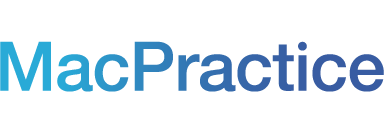You may know that the terms “EHR” and “EMR” mean electronic healthcare record and electronic medical record, respectively, but what do they really mean? As practice management and clinical software has evolved into full clinical and practice management platforms, many have used the terms interchangeably to mean the software they use to provide patient care. MacPractice also offers Abilities by these names, as well as EDR for Electronic Dental Records. For the purpose of this post, we will discuss the terms in their broad definitions, rather than the specific functions of either MacPractice Abilities.

During the 1990s, healthcare software began to become a more prominent part of owning a practice or being a healthcare provider of any type. Technology improved with it, and added new opportunities to enhance patient care, billing, patient communication, ePrescribing, and even general office management tasks.
The term EMR, or Electronic Medical Records, is widely accepted as the more classic terminology. EMR’s make it easier to create and complete electronic versions of paper charts. EMR systems are beneficial to providers to help them improve patient care through computerized entry and storage of patient data, which makes it quicker and easier to find patient records or to become a paperless practice. EMRs also introduced the capability to improve data accuracy and deliver alerts, such as possible medication contradictions or hypertension warnings.
The term EHR is more widely used to describe software that enables features that improve patient care through more advanced methods, like enabling the patient to view their health information online through portal systems, to contact their healthcare providers through secure messaging systems, and view and create referrals. “EHR” generally refers to systems that have improved charting, scheduling, and patient communication while allowing vendors to satisfy federal requirements for regulations like HIPAA and programs like Meaningful Use and MIPs.
If you are considering purchasing new software, remember that these terms will not always be used in the same way, and they are not regulated. A software vendor may use the term to apply to their product without delivering the commonly understood benefits. Make sure that you understand the exact features of the software that you are considering.
At MacPractice, we work for you and your practice.
MacPractice is dedicated to delivering the best practice management and clinical software to our clients, backed by world-class support and tightly integrated with productivity enhancing, time and money saving services and capabilities.
